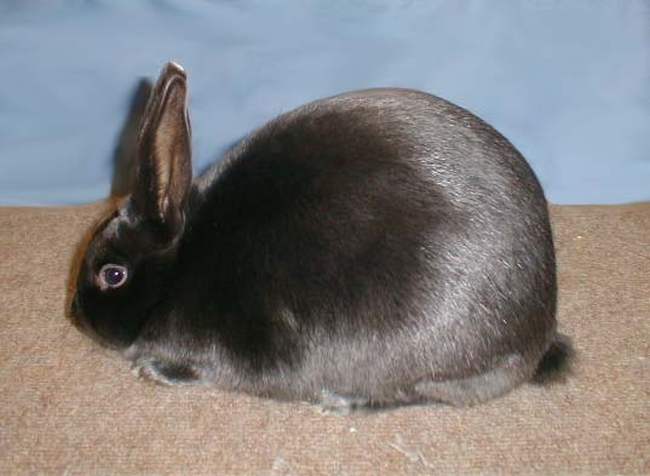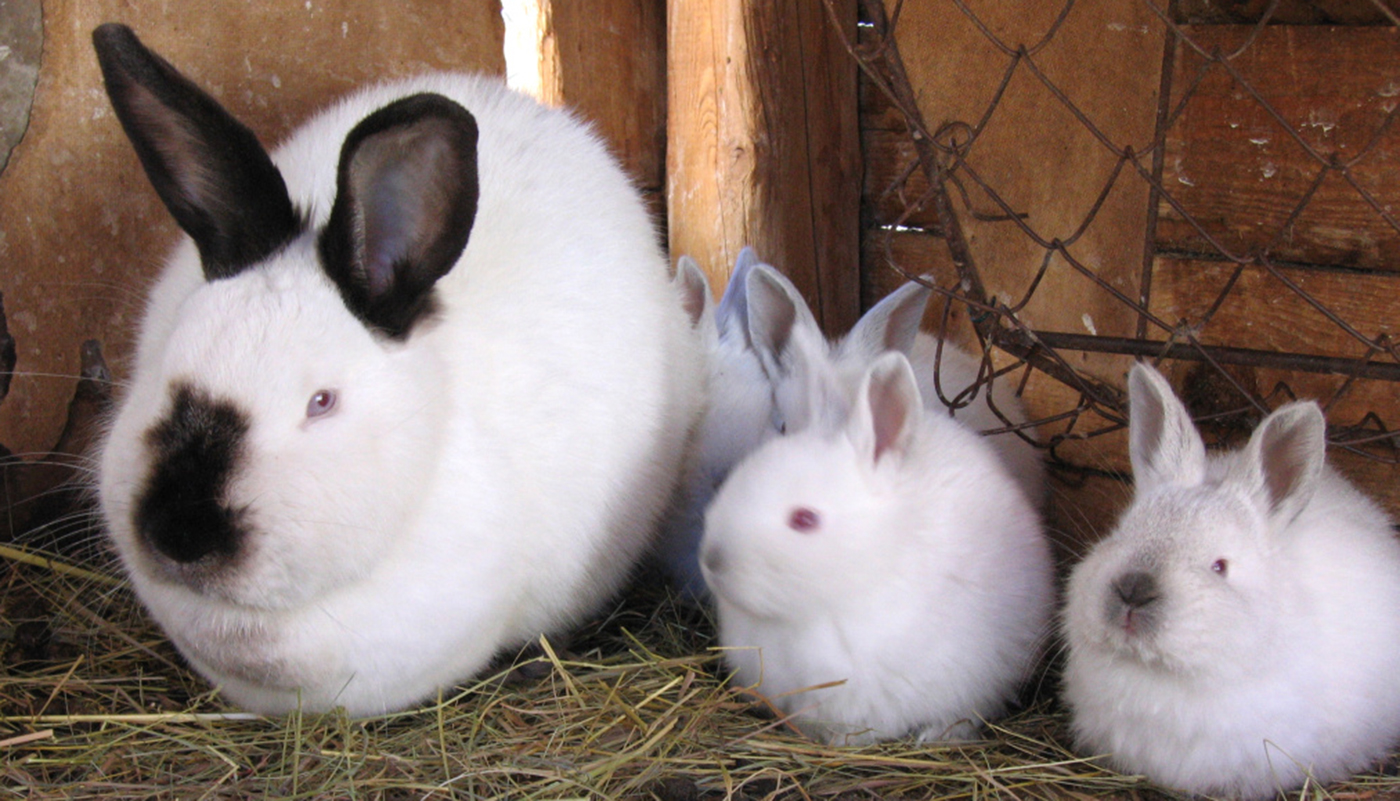
The Argente Brun Rabbit is the 49th rabbit breed to be accepted by the American Rabbit Breeders Association. It was officially accepted in 2015 at the 92nd annual American Rabbit Breeders Association convention that was held in Portland, Oregon.
These beautiful large sized rabbits have a lovely speckled coat that is a chocolate brown laced with silvery white frosting.
BREED PROFILE OVERVIEW
|
|
|---|---|
| Breed Name: | Argente Brun |
| Other Names: | None |
| Country of Origin: | France / United States of America |
| Breed Purpose: | Meat, fur, pets, and exhibition |
| Breed Size: | Large |
| Breed Weight: |
Female/Doe: 8.5 to 10.5 lbs. Male/Buck: 8 to 10 lbs. |
| Breed Color(s): | Even slivered or frosted chocolate brown across the body. They usually have slightly darker color ears, butterfly muzzle, and feet. Their under-color is a rich chocolate brown that goes down to the skin. |
| Physical Appearance: | The Agente Brun rabbit breed has a commercial rabbit type body that is more rounded from the neck area down to the cotton tail. Their bodies are of medium length with their hips being slightly higher and broader than their shoulders. Their back has a gradual rise from the back of their neck to their hindquarters. Their ears of medium length, carried close together, stand erect from their head and are well furrowed. |
| Temperament: | They are a sweet, placid breed that can be quite playful and affectionate |
BREED CHARACTERISTICS
- They are a large sized rabbit breed that is sweet and docile in temperament.
- They do not need special attention and care as most other rabbit breeds, but their coats should be brushed on a regular basis especially when they are molting.
- They have large litters with baby rabbits maturing at a nice steady pace. Usually reaching market weight quite early and they have good meat to bone ratio with a lot of nice lean rabbit meat for tasty stews and soups.
- The Argente Brun rabbit breed lives for around 7 to 9 years of age. Rabbits usually live a bit longer with the proper care and treatment.
| Good Pets? | They make great pets for first-time rabbit owners, elderly, singles and families with children of all ages. |
| Child Friendly? | Children should be supervised around animals and properly taught how to look after them and handle them. Rabbits can bite and scratch |
| Ideal Climate: | All climates – rabbits should never be left outside without proper shelter and housing that must be raised off the ground and predator safe. |
| Conservation Status: | Not listed by the *ALC Status/Rarity: Not at risk but are considered to be quite a rare breed. |
| Recognized by the ARBA? | Yes – they were admitted to the ARBA in 2015 |
| Rabbit Associations/Clubs: | Please refer to the American Rabbit Breeders Association for information on various association and clubs for the Argente Brun rabbit breed. |
| Where to buy them? | Please refer to the American Rabbit Breeders Association for information on various breeders and places to get the Argente Brun rabbit breed from. |
| Note: *ALC stands for American Livestock Conservancy | |
GENERAL INFORMATION
Argente Bruns were developed from Argente breeds that are among some of the oldest French rabbit breeds.
Bruns is born with a solid chocolate brown coloring and as they age their coloring starts to take on a silver frosted shade.
They tend to love attention and have been known to seek but gathering around the front of the cage whenever their owners are nearby.
They are a low-maintenance rabbit breed that does not need any special attention or care. They are easy to handle and even a novice with no prior rabbit breeding experience should have no trouble raising/keeping them.
Most rabbits have powerful back legs that can give quite a kick and with their nails can cause a bit of damage. Care should always be taken when handling the Argente Brun. Even though they are a large breed one must still be gentle, and all kids should be taught how to handle them.
The Argente Bruns tend to love vegetables especially cabbage, kale, and dandelions. These vegetables along with plenty of hay will help keep their molars from growing into their jaw and causing various health issues.
Care must be taken with the Argente Brun that they are not overfed, or they will get overweight and that is not good for the rabbit’s health. A good healthy diet with fresh food, water and plenty of exercises each day will ensure that they stay well within their weight limits.
Rabbits can be taught simple commands and will eventually come to you when called. They also love to play and as they are mostly stuck in a cage or enclosed run it is a good idea to get them a few toys to play with. They also enjoy obstacles to hop over, on and tunnel through.
It is a good habit to give pet rabbits regular health checks. This is to check that the rabbit has no parasites, mites and that their teeth are at a manageable size and not causing the rabbit any discomfort.
They can be groomed on a regular basis where their nails can be clipped, and their fur gently brushed in order to get rid of any excess fur. Especially at molting time it will help to un-clump any fur being shed on the rabbit’s body.
If you are going to clip the rabbits nails for the first time it is best to first check how to do it and how short to clip them.
HISTORY
The Argente rabbit breeds are one of the oldest French rabbits’ breeds and were developed in the mid-19th century. They were a very popular breed because of their thick soft attractive coats and sweet docile nature.
They rabbit breed was sent to America during the 1920s and 1930s from some countries in Europe. Mostly from France, England and Germany. A lot were exported to Canada as well and it was here that the Argente Brun first got started.
Upon receiving his shipment of Argente rabbits, Ed White, from Canada sold some of them to Charmaine Wardrop from Washington. She wanted a breed to work with and develop, the Argente was the perfect rabbit breed. She and her husband worked on the breed for many years to develop the Argente Brun with its most beautiful coloring.
After years of trying and working on the breed, they were finally accepted by the American Rabbit Breeders Association at the 92nd annual conference in 2015.
USEFUL LINKS
- American Rabbit Breeders Association
- Fur Commission USA
- North American Meat Institute
- American Livestock Conservancy
- Animal Shelter (ASPCA)
- American Veterinary Medical Association
- American Animal Welfare Society
- American Animal Control
- American Society of Animal Science
- United States Department of Agriculture
- United States Department of Agriculture – Rabbit Meat
 French Angora Rabbit – Everything You Need to Know
French Angora Rabbit – Everything You Need to Know Crème D’Argent Rabbit – Everything You Need to Know
Crème D’Argent Rabbit – Everything You Need to Know Satin Rabbit – Everything You Need to Know
Satin Rabbit – Everything You Need to Know Lionhead-Angora Mix Rabbit: Charming Hybrid Pet
Lionhead-Angora Mix Rabbit: Charming Hybrid Pet Silver Fox-Satin Rabbits: A Unique Crossbreed
Silver Fox-Satin Rabbits: A Unique Crossbreed Dutch Silver Fox Hybrid Rabbits: A Perfect Blend of Dutch and Silver Fox Breeds
Dutch Silver Fox Hybrid Rabbits: A Perfect Blend of Dutch and Silver Fox Breeds 10 Large Rabbit Breeds
10 Large Rabbit Breeds Californian Rabbit – Everything You Need to Know
Californian Rabbit – Everything You Need to Know 10 Best Meat Rabbit Breeds
10 Best Meat Rabbit Breeds American Rabbit – Everything You Need to Know
American Rabbit – Everything You Need to Know Mini Satin Rabbit – Everything You Need to Know
Mini Satin Rabbit – Everything You Need to Know Introducing the Cinnamon Jersey: The Adorable Hybrid Rabbit
Introducing the Cinnamon Jersey: The Adorable Hybrid Rabbit